Limit Does Not Exist Graph
When working with functions in calculus, we will sometimes detect that a limit does not be. There are lots of reasons this can happen, and it helps to be familiar with each one then you know what to look for.
And then, when does a limit not exist? The limit of a office at a point does non exist in 4 cases: 1. when the left hand limit does not exist, 2. when the right hand limit does non be, 3. when the left and correct hand limits exist, just have unlike values, and four. when the part value is undefined, due to a domain restriction.
Of course, the existence of limits for a function can also tell usa about continuity and differentiability of the function at certain points.
In this article, we'll talk about when a limit does not be. We'll await at some examples of each case to make the concept clear.
Let's go started.
When Does A Limit Not Exist?
A limit does not exist in the following cases:
- Left Manus Limit Does Non Exist
- Right Hand Limit Does Non Exist
- Left & Right Hand Limits Both Exist, But They Have Dissimilar Values
- Part Is Not Defined Due To Domain Restriction
Annotation that there are a few ways for a left or right hand limit to not exist, including:
- Oscillating values of the limit
- Unbounded increment or decrease (a vertical asymptote, or a limit of infinity)
Permit's beginning past looking at cases and examples where the left hand limit does not exist.
Left Hand Limit Does Not Be
In order for a limit to exist, both the left and right hand limits must be, and they must take the same value. Here are some examples where the left hand limit does not exist.
Case 1: Left Manus Limit Does Not Be (Oscillating Values)
Consider the office f(10) = sin(ane / x2). If we take a left paw limit equally ten approaches null:
- Limx->0-f(x)
we volition observe that the limit does not exist.
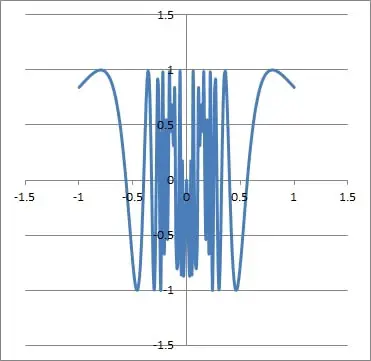
This is because the sine function oscillates between all values from -i to 1 as x increases.

As x approaches nil, 1 / 102 increases without bound. Then, the limit will never "settle down" to a single value, and will go along oscillating forever.
Thus, the left hand limit does not be in this case.
Example 2: Left Paw Limit Does Not Be (Vertical Asymptote)
Consider the function f(x) = ane / xii. If nosotros take a left hand limit as x approaches naught:
- Limten->0-f(10)
we will find that the limit does not exist.

This is because the function 1 / x2 grows without leap as x approaches cipher.
As 10 approaches nil, ten2 remains positive but becomes smaller and smaller. Since 102 is in the denominator, we will see ane / xii increase without bound.
Thus, the left hand limit does not exist in this instance (or we could say that the limit is infinity).
Right Manus Limit Does Not Exist
But as a left hand limit can fail to exist, a right hand limit can also fail to be. Here are some examples where the right hand limit does non exist.
Case one: Right Hand Limit Does Non Be (Oscillating Values)
Consider the function f(x) = cos(one / tenii). If we take a right paw limit every bit x approaches zero:
- Limten->0+f(10)
nosotros will notice that the limit does not exist.

This is because the cosine function oscillates between all values from -1 to ane equally ten increases.

Every bit x approaches nada, i / xtwo increases without bound. So, the limit will never "settle down" to a single value, and will continue aquiver forever.
Thus, the right hand limit does non exist in this case.
Case two: Correct Hand Limit Does Not Be (Vertical Asymptote)
Consider the office f(x) = 1 / (x – 2). If we take a left hand limit as 10 approaches 2:
- Limx->2+f(x)
we will detect that the limit does non exist.
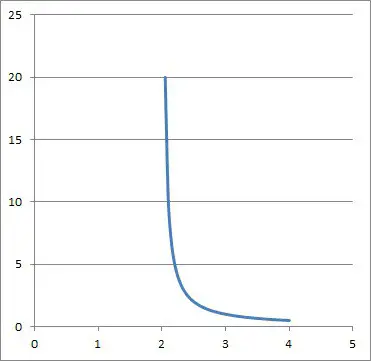
This is considering the part 1 / (10 – 2) grows without spring as x approaches two.
As 10 approaches ii, (x– two) approaches zippo (and remains positive). Since (x – ii) is in the denominator, nosotros will see i / (x – ii) increase without bound.
Thus, the right hand limit does not be in this instance (or nosotros could say that the limit is infinity).
Left & Right Hand Limits Both Exist, Just They Take Different Values
In some cases, both the left and correct paw limits will exist for a function, simply they will take different values. This is sometimes called a "jump" discontinuity.
Hither are some cases where the left and right hand limits do non agree.
Case 1: Left & Right Mitt Limits Both Exist, But They Have Unlike Values (Absolute Value)
Consider the function f(x) = |ten| / x.
If nosotros take a left mitt limit as x approaches 0:
- Limx->0-f(ten)
we will notice that the limit is -1.
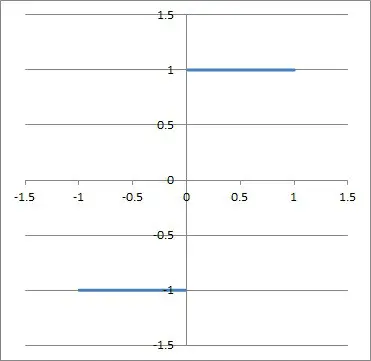
This is considering the numerator and denominator will have opposite signs, but the same absolute value (as you lot can see in the tabular array below).
| x | |x| | |x| / x |
|---|---|---|
| -0.1 | 0.1 | -1 |
| -0.01 | 0.01 | -1 |
| -0.001 | 0.001 | -1 |
| -0.0001 | 0.0001 | -1 |
role f(ten) = |x| / x equally 10
approaches nil from
the left hand side.
Similarly, if we take a right hand limit every bit x approaches 0:
- Limx->0+f(x)
we volition detect that the limit is +1. This is considering the numerator and denominator will have the aforementioned sign and the same absolute value (every bit you can see in the table below).
| x | |ten| | |10| / x |
|---|---|---|
| 0.1 | 0.1 | 1 |
| 0.01 | 0.01 | 1 |
| 0.001 | 0.001 | one |
| 0.0001 | 0.0001 | ane |
function f(x) = |x| / 10 as x
approaches zero from
the correct mitt side.
So, the left paw limit (-i) and right hand limit (+1) both exist. However, they disagree, since they do not accept the aforementioned value.
Thus, the limit as ten approaches aught does non exist for this function.
- Lim10->0f(x): DNE (does not exist)
Example 2: Left & Right Hand Limits Both Exist, But They Have Unlike Values (Piecewise)
Consider the following piecewise function:
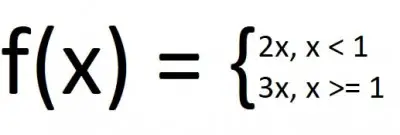
If nosotros take a left mitt limit equally x approaches i:
- Limx->ane-f(x)
nosotros will find that the limit is 2.
Similarly, if we take a right manus limit equally 10 approaches ane:
- Limx->1+f(x)
we volition find that the limit is iii.
And then, the left manus limit (ii) and right hand limit (three) both exist. However, they disagree, since they do not have the same value.
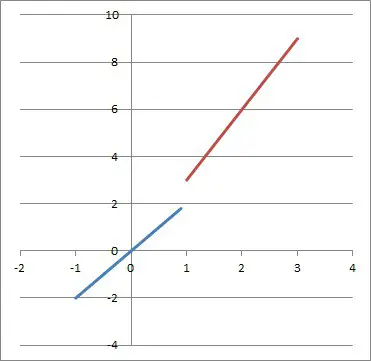
Thus, the limit as x approaches 1 does not be for this function.
Function Is Not Defined Due To Domain Brake
A limit can also fail to be if a function is not divers due to a domain restriction.
Example: Function Is Not Defined Due To Domain Restriction (Foursquare Root)
Consider the function f(x) = √10.
If nosotros take a right mitt limit as 10 approaches 0:
- Limx->0+f(ten)
the limit is defined, and the value is 0 (since the foursquare root of naught approaches goose egg).
However, if we take a left hand limit as x approaches 0:
- Limten->0-f(x)
the limit is undefined in the real numbers.
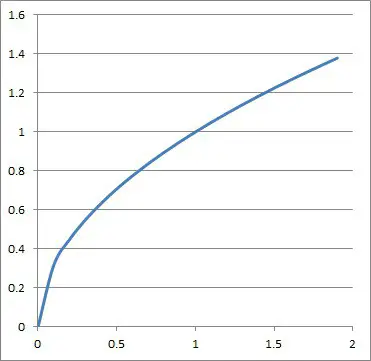
The reason is that when we approach naught from the left, we are looking at negative values of x. No matter how small these values become, they are still negative.
The foursquare root of any negative number is an imaginary number, then the limit does non be. Thus, the domain restriction for the square root function (ten >= 0) means that we cannot take a left hand limit.
Since the left manus limit at nada does not exist, then the limit at zero does not exist for this function.
What Does It Hateful For A Limit To Not Exist?
When the limit of a function does non exist at a point x = c, it means that:
- the function is not continuous at x = c (since there is an oscillating value, vertical asymptote, leap discontinuity, etc.)
- the function is not differentiable at x = c (since a function cannot be differentiable if it is not continuous).
In other words, the existence of a limit for a part at a indicate is a prerequisite for continuity of the role at that bespeak, which is in turn a prerequisite for differentiability of the role at that point.
Conclusion
Now yous know about the cases when a limit does non exist and what to look for (oscillating values, vertical asymptotes, and bound discontinuities).
If you take the limit of a quotient that results in an indeterminate course (such as 0/0 or infinity/infinity), you can utilise L'Hopital'southward Rule.
You can learn about cases when a limit is zippo, negative, or space in my article here.
You can learn virtually the floor function (a type of piecewise function) hither.
I hope you found this article helpful. If then, please share it with someone who can utilise the information.
Don't forget to subscribe to my YouTube channel & get updates on new math videos!
~Jonathon
Limit Does Not Exist Graph,
Source: https://jdmeducational.com/when-does-a-limit-not-exist-4-key-cases-to-know/
Posted by: avilamoread.blogspot.com


0 Response to "Limit Does Not Exist Graph"
Post a Comment